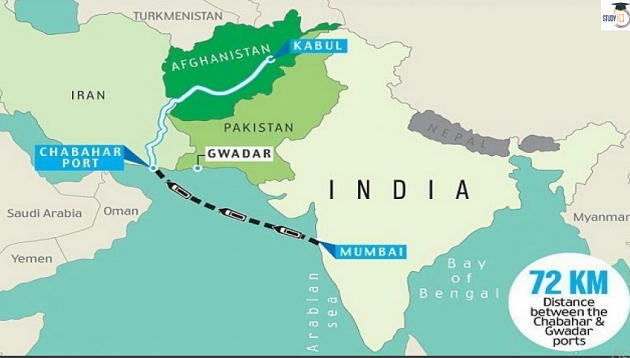Table of Contents
The sum and substance of the Afghan deal
- As former U.S. Defence Secretary General Mattis put it, “The U.S. doesn’t lose wars, it loses interest.
- ” U.S. Special Envoy Ambassador Zalmay Khalilzad and former Taliban deputy leader Mullah Abdul Ghani Baradar.
- The U.S. is on its way out and second, this does not ensure peace for the Afghan people.
- Shades of Vietnam

- U.S. President Richard Nixon had faced a similar dilemma.
- Seeking an exit, his National Security Adviser Henry Kissinger, during his secret visit to Beijing in July 1971, assured Premier Zhou Enlai that the U.S. was prepared to withdraw completely from Vietnam in return for release of U.S. prisoners of war and a ceasefire lasting “a decent interval”.
- Kissinger and Nixon knew that the deal would leave their ally, the South Vietnamese government led by President Thieu, vulnerable.
- Nixon was re-elected with a record margin in November 1972 on the platform that peace was at hand.
- Saigon fell to the North Vietnamese forces on April 30, 1975.
- To win his re-election, Nixon had promised an honorable peace and delivered a delayed defeat, but by then the world had moved on. Dr. Kissinger won the Nobel Peace Prize in 1973 (joint winner).
- Mr. Trump’s 2017 policy aimed at breaking the military stalemate in Afghanistan.
A three-way negotiation ensued.
- Doha track with the Taliban
- Islamabad/Rawalpindi
- Kabul to ensure that the Afghan government would accept the outcome
- The deal was ready to be signed last September when Mr. Trump abruptly called it off, stalling the process.
- National Security Adviser John Bolton’s dismissal (he was opposed) and the release of three high-level Taliban militants including Anas Haqqani (Sirajuddin Haqqani’s brother) in November helped smoothen issues.
The key features of the Doha deal are
- U.S. troops to be reduced from the current 14,000 to 8,600 by June 15 (in 135 days)
- Withdrawal of all remaining U.S. and foreign forces by April 29, 2021 (in 14 months)
- Removal of the Taliban from UN Security Council sanctions list by May 29
- Up to 5,000 Taliban prisoners and 1,000 Afghan security forces prisoners to be released from Afghan and Taliban custody respectively by March 10
- U.S. sanctions against Taliban leaders to be lifted by August 27
- Intra-Afghan talks to begin on March 10
- President Ghani angrily declared a day later that release of prisoners will be part of the agenda for the intra-Afghan talks.
- Provoking the Taliban to declare that the truce would no longer cover Afghan security forces.
- There is no mention of what will happen to the Taliban fighters whose numbers have suddenly inflated.
Rights or wrong?
- The application on behalf of the Office of the High Commissioner for Human Rights, seeking to be heard as amicus curiae in the pending litigation in the Supreme Court against the Citizenship (Amendment) Act, 2019.
- The government sees it as unwarranted interference.
- High Commissioner is offering the undoubted expertise that the premier UN body possesses in aid of the Court.
- She has appreciated the amendment’s positive side, noting its potential to redress the “irregular” condition of some migrants through a quicker citizenship process.
- It must be noted that the Court has relied on principles contained in international legal instruments in some of its judgments.
Dark tales in Andhra Pradesh’s IIT success story
- Among the happiest students will be those who will get admission to the Indian Institutes of Technology (IITs), and among the States, the largest number will be from Andhra Pradesh (AP).
- But underlying these grand successes is an ugly story.
- As the school had to ‘complete’ the syllabus prescribed by the State government along with IIT coaching, the syllabi for Classes XI and XII was taught from Class VI onwards too, with 10% of the syllabus being ‘covered’ each year.
- During interviews, government officials and teachers said that students in such schools did little or no physical or extracurricular activities, and got little rest.
- After a high level of stress and sacrificing a wellrounded education, 3-4% of the total students got into IITs.
- Government officials, teacher educators, and even panchayat representatives interviewed were aware that the educational practices of corporate schools were questionable, and that they fooled and exploited students and parents.
- The corporate school management exercised considerable influence at the very top levels of government.
- They were reported to contribute funds during elections, and some had begun political careers themselves.
- This is a real story of lost childhood
Trump 2.0 may see more slash-and-burn unilateralism
- Not since Richard Nixon’s 24-hour state visit 50 years ago has a U.S. President spent as little time on Indian soil as Donald Trump did.
- The government has already, fleetingly, been burnt by Mr. Trump’s slash-and-burn unilateralism.
- In March 2018, ‘national security’ tariffs of 25% and 10% were imposed on $1.01 billion worth of Indian steel and aluminium exports, respectively.
- This use of Section 232(b)-based ‘national security’ authority was clearly at odds with WTO/GATT law, which requires that such action be “taken in time of war or other emergency in international relations” and should touch upon the member state’s “essential security interests.”
- The tariffs were followed by New Delhi’s eviction from the Generalized System of Preferences (GSP) programme in June 2019 — in turn, affecting an additional $5.7 billion of exports.
- In December 2019, Mr. Trump took his wrecking ball to Geneva, incapacitating the World Trade Organization’s (WTO) dispute settlement function.
- U.S. Trade Representative (USTR) was stripped India of its ‘developing country’ classification for ‘special and differentiated treatment’ purposes. A U.S.-European Union-Japan led effort is currently under way to introduce stark new industrial subsidies and technology transfer disciplines that will inevitably crimp India’s development policy space — even as the trio luxuriate in multi-billion-dollar trade distorting agricultural subsidies.
Caught in a bureaucratic web
- The Gauhati High Court declared Sahijuddin a foreigner on November 13, 2015.
- He had appealed to the High Court against an ex-parte order of the Foreigners Tribunal in Kokrajhar declaring him a foreigner.
- Mr. Sahijuddin was too poor to afford the services of a lawyer and was not represented before the Tribunal.
- The High Court found this reason unconvincing and stripped him of his citizenship without even examining the documents he possessed.
- Mr. Sahijuddin is one of 1.17 lakh people who were declared foreigners by Foreigners Tribunals (as on March 31, 2019), quasi-judicial bodies in Assam that decide questions of citizenship.
- In this article, the authors discuss the problems with how appeals from Foreigners Tribunals cases are decided by the Gauhati High Court, based on an analysis of 787 such orders and judgments between 2010 and 2019.
- Of the cases analysed, 41% of the appeals were from Morigaon, Barpeta, and Goalpara, none of which share a border with Bangladesh.
- Around 35% of these appeals were from ex-parte orders of Foreigners Tribunals i.e., without hearing the person accused of being a foreigner.
- Unlike Mr. Sahijuddin, when Bhanu Biswas received a notice, he hired a lawyer and provided him with all the necessary documentation to prove his Indian citizenship before the Foreigners Tribunal.
- He was subsequently declared a foreigner by the Gauhati High Court on September 22, 2015.
- The burden of proof under the Foreigners Act, 1946 is on the person accused of being a foreigner.
- If the person accused does not appear before the Tribunal, they will be declared a foreigner without the state having to prove their case.
- All the persons who appealed to the High Court had some form of documentation.
- Around 61% of them produced electoral rolls and 39% of them produced permanent residence certificates/certificates from the panchayat.
- Overall, in 97% of the appeals before the High Court, the person was declared a foreigner. In 15% of these cases, the High Court ordered deportation. Amongst the remaining cases, in 1%, the Court ordered that the person be sent to a detention centre, and in 80% of the cases, the Court did not specify what steps were to be taken.
- The question of citizenship is nestled in a confusing tangle of documents, bureaucracy, and legal procedures which Foreigners Tribunals and the Gauhati High Court are tasked with resolving.
- In doing so, courts need to avoid an overly legalistic approach which ignores fundamental contradictions between lived experiences of identity documentation and evidentiary requirements.
Download Free PDF – Daily Hindu Editorial Analysis






















 WhatsApp
WhatsApp